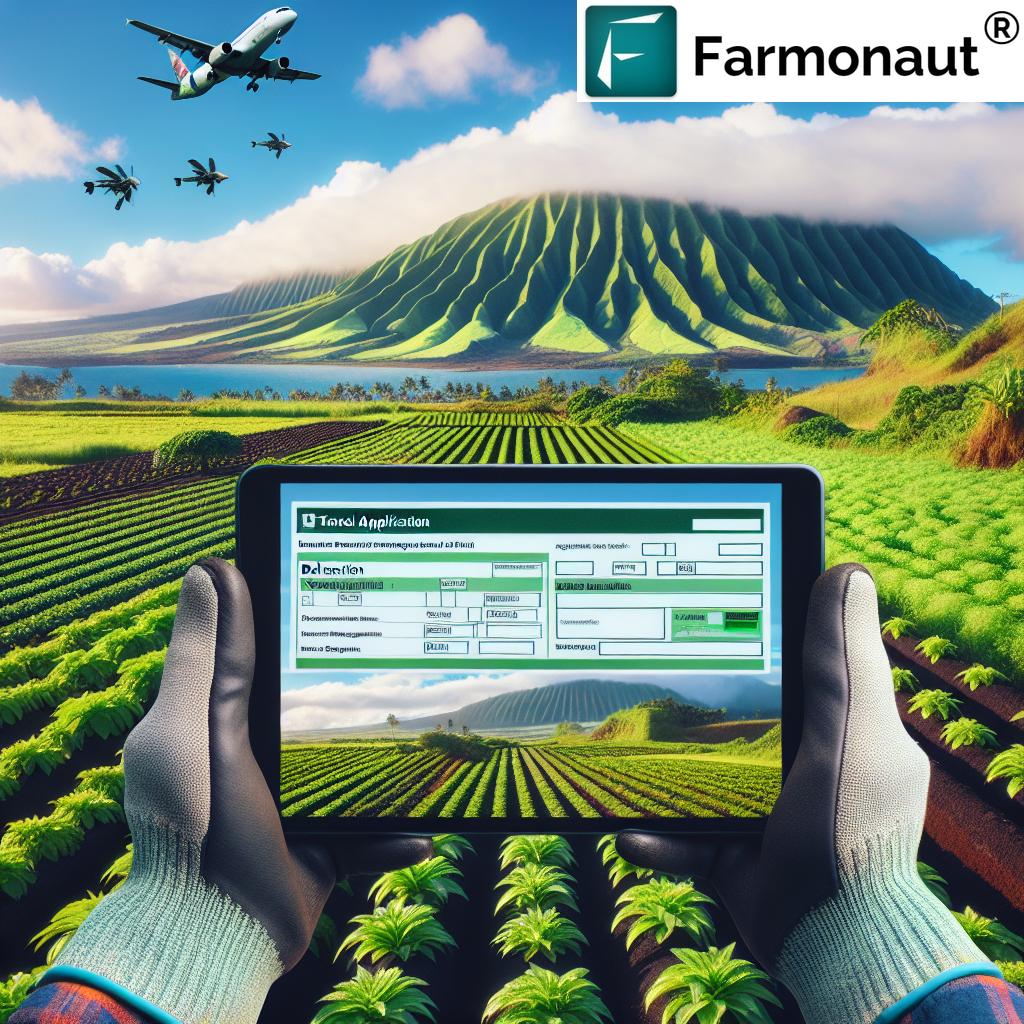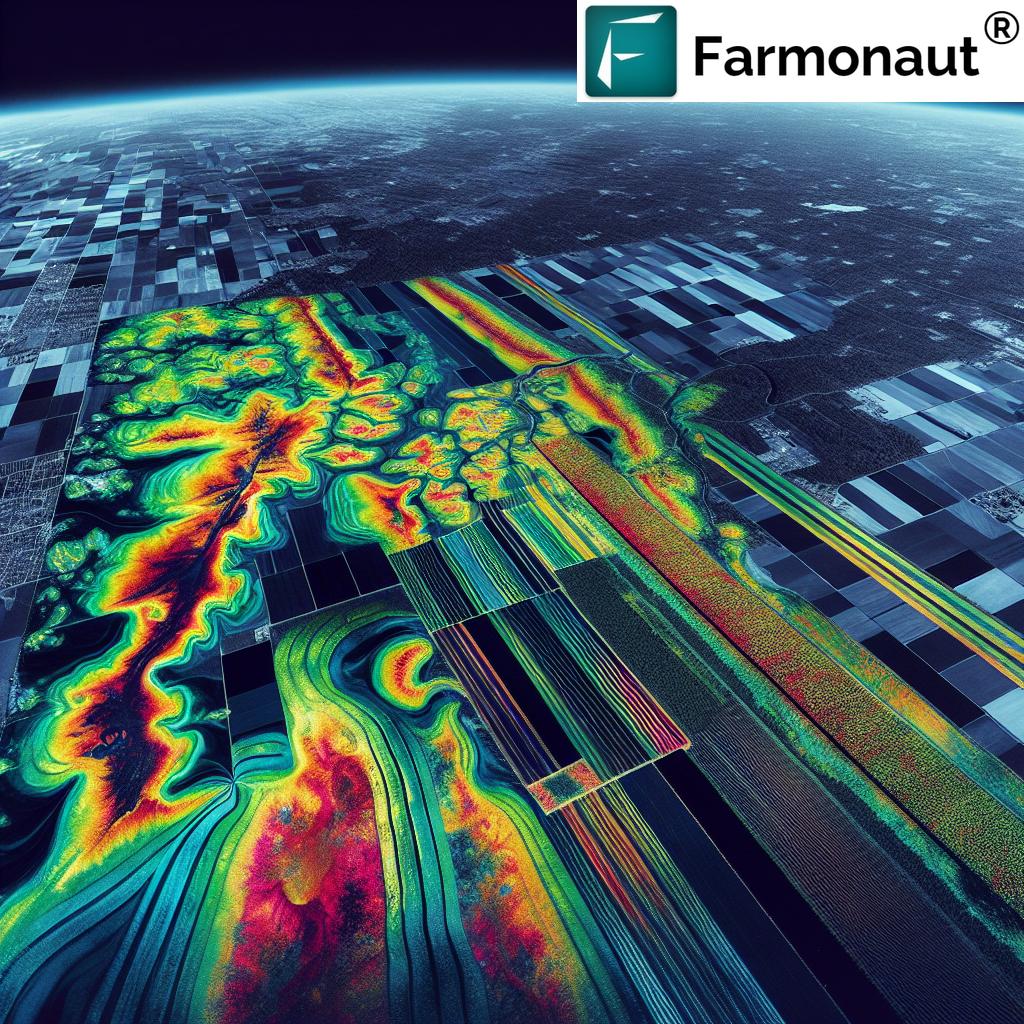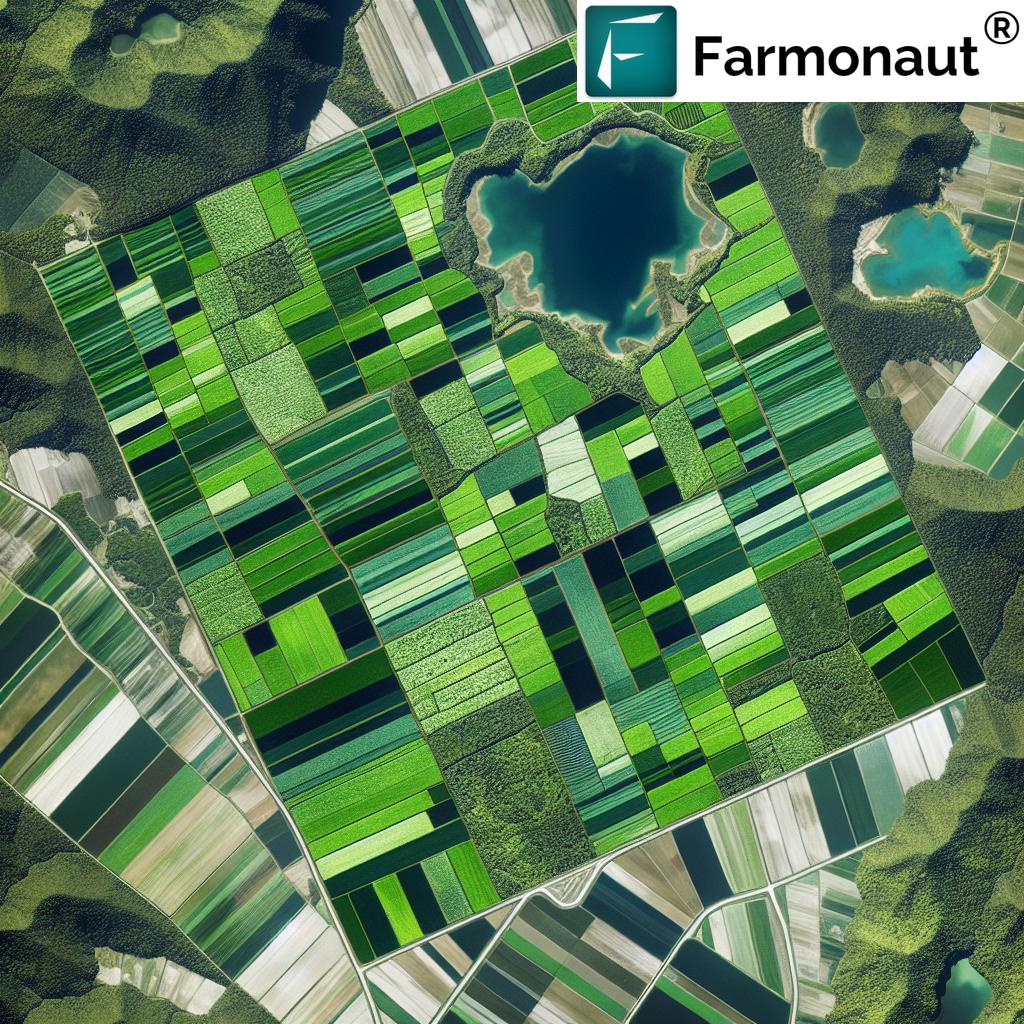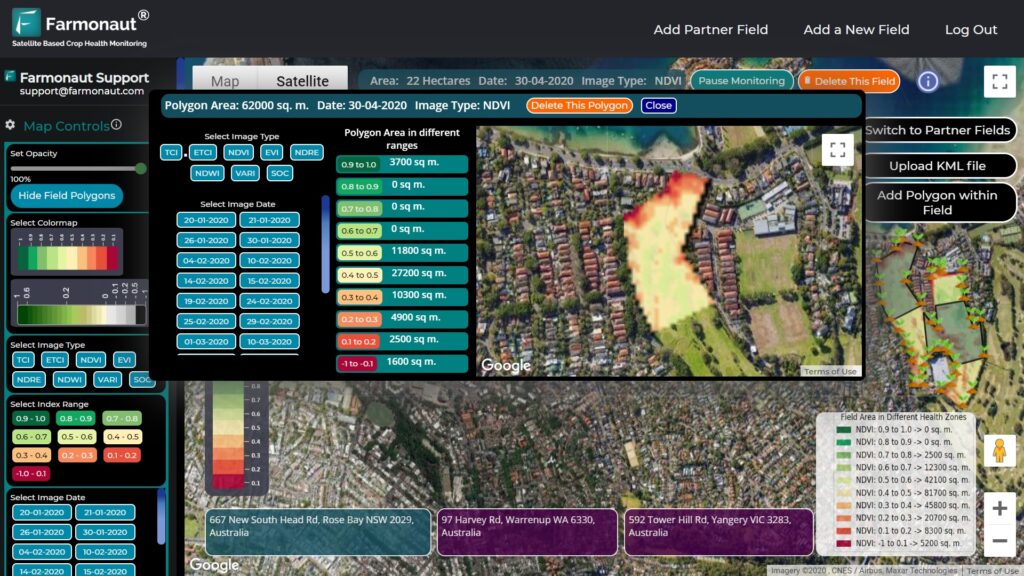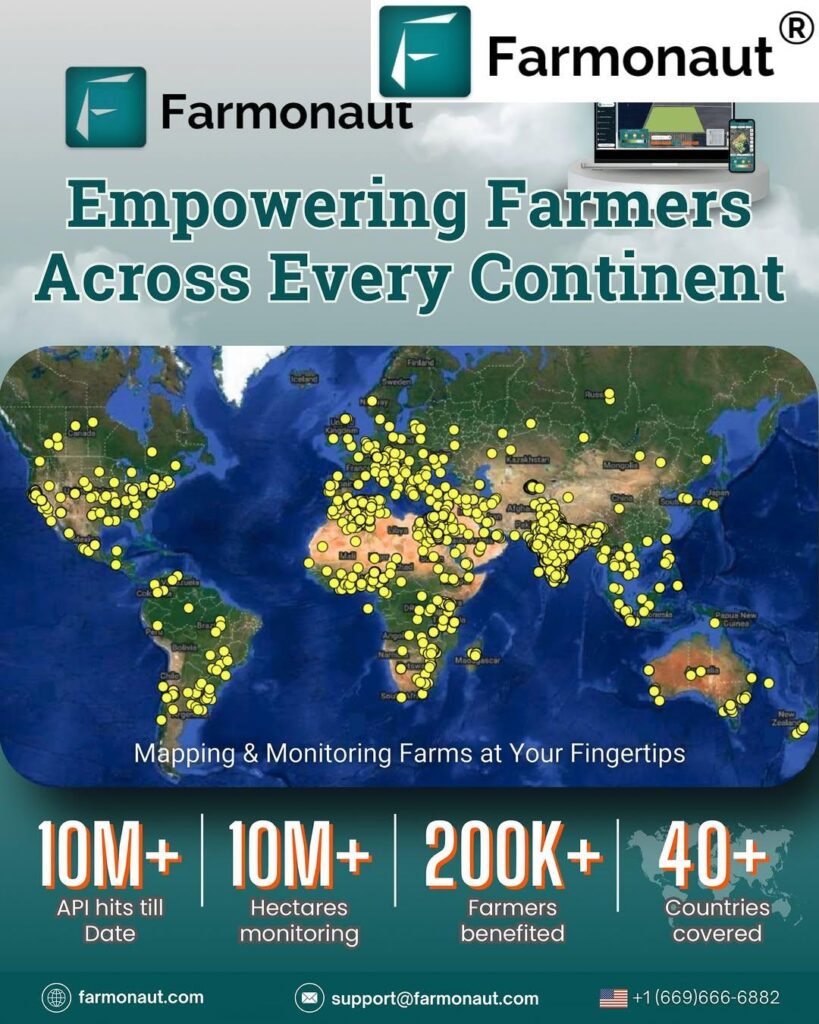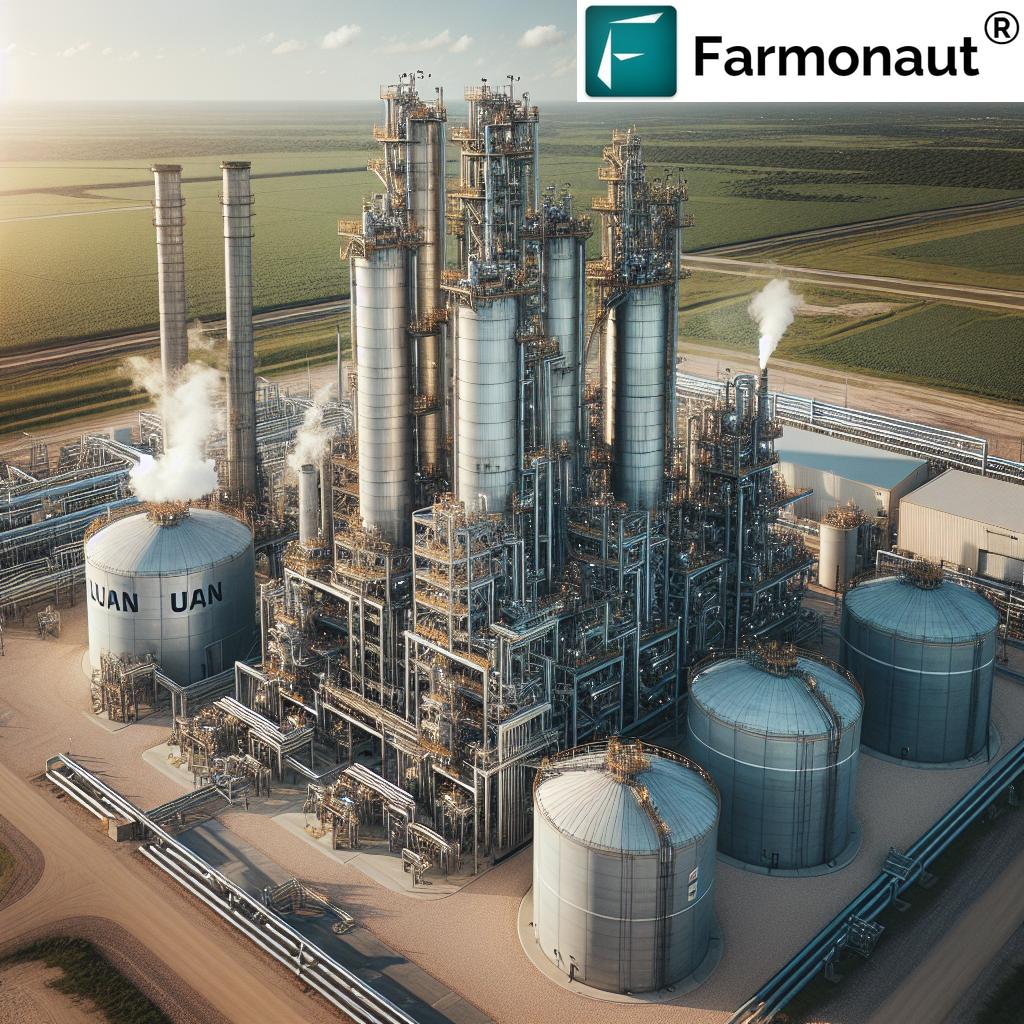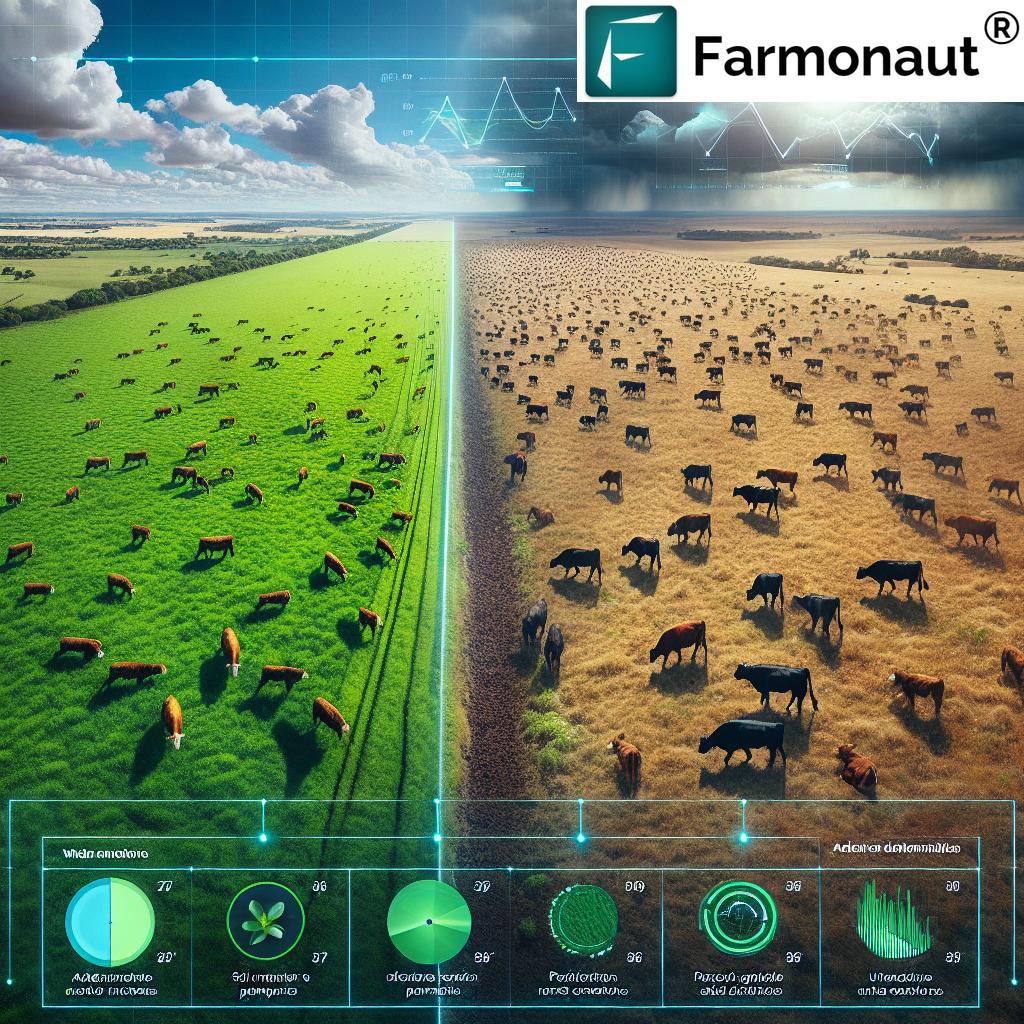Farming in America 2025: Powerful Trends Shaping Agriculture
Meta Description: Discover top trends and critical challenges in farming in America for 2025 – explore how technology, sustainability, and economic dynamics are reshaping American agriculture’s future.
Table of Contents
- Summary: Farming in America 2025
- The Landscape of American Farming in 2025
- Trivia: Precision Technologies on the Rise
- Precision Agriculture & Smart Innovations
- Featured Videos: AgriTech and Satellite Monitoring
- Automation, Robotics & Digital Transformation
- Sustainability and Environmental Stewardship in American Agriculture
- Featured Videos: Carbon Farming and AI Revolution
- Trends Overview Comparison Table — Farming in America 2025
- Supply Chain, Market Dynamics, and Policy Influences
- Labor, Rural Communities & Workforce Shifts
- Featured Videos: Large-Scale Monitoring & Geotagging Future
- Farmonaut’s Role: Empowering America’s Agriculture with Satellite Technology
- Trivia: Sustainable Practices Accelerate
- Looking Forward: The Farming Industry in America Beyond 2025
- Frequently Asked Questions
Summary: Farming in America — Trends and Challenges in 2025
The farming industry in America stands at a transformative crossroads in 2025. As one of the world’s leading agricultural producers, the United States continues to adapt to a complex array of technological advancements, environmental challenges, economic pressures, and changing consumer preferences. At the heart of this evolution are the adoption of precision agriculture, sustainable practices, and innovative solutions that aim to balance increased productivity with resource stewardship. American farms, from the vast grain fields of the Midwest to specialty and organic growers on the coasts, are navigating new opportunities and obstacles. With the support of advanced tools and data-driven decision-making, including satellite technologies and smart resource management, the sector is redefining the future of farming in America — striving to ensure both food security and environmental resilience for generations to come.
The Landscape of American Farming in 2025
Agriculture has long been the backbone of the American economy, identity, and culture. In 2025, farming in America continues to reflect the dynamism that has characterized it for generations.
The united states remains a global leader in agricultural production—accounting for a significant share of the world’s food supply and diverse farming operations.
- Corn, soybeans, wheat, and cotton still dominate as key commodities, with livestock—beef, dairy, and poultry—also playing a critical role.
- However, there is growing diversification into specialty crops, niche products, and organic produce, spurred by consumer demand for healthy and sustainable food options.
- America’s farming landscape now encompasses vast grain fields in the Midwest, specialized fruit and vegetable farms along the coasts, and mixed operations integrating crops and livestock.
The industry in 2025 also mirrors broader global trends: adapting to labor market pressures, the impacts of climate change, and heightened scrutiny around sustainability and resource management. The stage is set for powerful changes and innovations that will reshape farming in America for years to come.
“By 2025, over 60% of American farms are expected to adopt precision agriculture technologies for improved efficiency.”
Precision Agriculture & Smart Innovations Leading the Way
One of the most profound trends shaping farming in America in 2025 is the widespread adoption of precision agriculture and cutting-edge technologies. These innovations are redefining how farmers manage resources, monitor crop health, and make data-driven decisions to optimize productivity and sustainability.
What Is Precision Agriculture?
Precision agriculture refers to the use of advanced technologies—like
drones, satellite imagery, Internet of Things (IoT) sensors, and AI analytics—to gather and analyze field-level data in real time.
- Drones allow for rapid, detailed aerial mapping and crop monitoring.
- Satellite imagery provides large-scale, multispectral data on vegetation health, soil conditions, and environmental changes.
- IoT sensors collect information on moisture, temperature, and nutrient levels, enabling tailored irrigation and fertilizers application.
- Artificial intelligence interprets the data to suggest optimal sowing, spraying, and harvesting schedules—reducing input waste and maximizing yield.
This shift is not just about boosting efficiency but also about reducing environmental impact and resource waste, making it a cornerstone for sustainable farming.
How Precision Technology Helps American Farms
- Optimizes Inputs: Reduces overuse of water, fertilizers, and pesticides.
- Boosts Output: Achieves higher yields and better-quality produce.
- Environmental Stewardship: Protects soil and water resources by minimizing runoff and soil degradation.
- Cost Efficiency: Minimizes labor and energy costs through automation and smart planning.
- Mitigates Climate Risk: Early detection of plant stress and disease improves resiliency to climatic variations.
With more than 60% of American farms projected to use precision ag technologies by 2025, this trend is fundamentally altering the farming industry in America.
We, at Farmonaut, provide leading-edge satellite-based solutions for farm and crop monitoring—including real-time advice and multispectral imaging—for American agriculture operations. To access these solutions, try our Web, iOS, or Android App for advanced, affordable resource management and environmental tracking.
For developers and agritech businesses: Integrate detailed satellite and weather data using our Farmonaut API or review technical details at our API Developer Docs.
Featured Videos: Smart Farming Tech in Action
Automation, Robotics, and Digital Transformation in America Farming 2025
As labor costs rise and workforce shortages continue to pose challenges for the farming industry in America, automation is experiencing unprecedented growth. In 2025, the sector is making bold investments in robotics, AI, and digital platforms to streamline farm operations, reduce manual workload, and enhance precision.
Some Examples of Automation & Robotics Impacting U.S. Agriculture
- Autonomous tractors: Self-driving machines handle seeding, plowing, spraying, and harvesting over vast fields, especially in the Midwest grain regions of the United States.
- Smart irrigation systems: Advanced controls and IoT-driven management ensure water is delivered in precisely the required quantity, dramatically reducing waste and boosting efficiency.
- Robotic fruit pickers: Robots with computer vision can identify, pick, and sort a variety of fruits and vegetables, lessening reliance on seasonal workers.
- Automated livestock management: Tracking and remotely monitoring animal health and feed through AI-enabled sensors support large herds with reduced staff.
Automation’s reach is not limited to large-scale agribusiness; even small and medium-sized farms are employing digital solutions for record-keeping, forecasting, and resource management.
Discover scalable management tools—Farmonaut’s Large Scale Farm Management Suite—that empower decision-making and resource efficiency across farm sizes.
Additionally, for operations with significant fleets and equipment, see our Fleet Management Platform to minimize logistics costs and boost ROI.
Sustainability and Environmental Stewardship in American Agriculture
Environmental challenges such as climate change, topsoil depletion, water scarcity, and the loss of biodiversity are pushing farmers and policymakers to reimagine farming in north America. By 2025, sustainability is not just an ethical imperative, but a business necessity.
Main Sustainable Practices in U.S. Farms
- No-till and cover cropping: Protects soil structure, retains moisture, and enhances organic matter—important for both soil health and climate resilience.
- Regenerative Agriculture: Focuses on rebuilding soil health, restoring ecosystems, and increasing biodiversity. Regenerative methods gain momentum through carbon sequestration incentives.
- Integrated Pest Management (IPM): Reduces reliance on chemical pesticides using natural predators and ecosystem-based solutions.
- Organic and specialty crops: The U.S. is seeing steady growth in organic acreage and the production of high-value, specialty foods to meet evolving consumer demand.
- Water stewardship: Efficient irrigation combined with conservation initiatives is especially critical in the drought-prone western states.
Farmers are integrating sustainable management through technology: digital tracking of resource use, carbon footprinting tools, and smart advisory platforms.
If your operation aims to track and reduce greenhouse gas emissions, investigate our Carbon Footprinting Service, a key tool to align with compliance and unlock sustainability incentives.
Featured Videos: Carbon Farming, Soil Health, and AI in 2025
Trends Overview Comparison Table — Farming in America 2025
| Trend | Description | Estimated 2025 Impact | Key Challenges |
|---|---|---|---|
| Precision Agriculture | Advanced use of IoT, satellites, drones, and sensors for real-time crop and soil data, enabling targeted decision-making. | Adoption by 60% of American farms; up to $12B in annual efficiency gains (est.). | Cost, data integration, rural connectivity, farmer education. |
| Automation & Robotics | Deployment of autonomous tractors, robotics for picking & sorting, and automated livestock monitoring. | Projected to reduce manual labor needs by 40% on large farms. | High initial investments, skill gaps, firmware updates. |
| Regenerative Sustainability Practices | Adoption of soil health strategies, carbon capture, biodiversity enhancement, resource cycling. | Estimated 35% increase in adoption from 2021 levels. | Yield/revenue uncertainty, transition costs, market premiums. |
| Market & Supply Volatility | Global supply chain fluctuations, export/import shifts, and unpredictable commodity prices. | Volatility expected to impact 1 in 3 farm operations annually. | Uncertain trade policies, input price spikes, demand fluctuations. |
| Policy & Insurance Frameworks | Enhanced government support for crop insurance, disaster relief, and environmental incentives. | Over 80% of eligible acres enrolled in federal crop insurance. | Administrative complexity, eligibility gaps, fluctuating policy. |
Supply Chain, Market Dynamics, and Policy Influences in U.S. Agriculture 2025
The economic landscape for American agriculture in 2025 is both dynamic and unpredictable. Global supply chains are stabilizing post-disruption, yet input costs for seeds, equipment, and fertilizers remain volatile. Export markets and shifting trade agreements play a pivotal role in pricing and demand for U.S. commodities.
- Crop insurance and risk mitigation programs: Over 80% of American cropland is now enrolled in some form of insurance, with government programs providing vital income protection in the face of disasters or price drops.
- Consolidation: Larger agribusinesses are expanding their reach, often outpacing smaller farms through economies of scale, advanced technology, and access to capital.
- Crop loan & insurance verification: Reducing fraud and supporting rural prosperity—explore our Satellite-Based Crop Loan and Insurance Service for streamlining claims and reducing risks.
- Product origin & transparency: Consumers, supermarkets, and exporters increasingly demand traceable, authentic agricultural products. Our Blockchain-Based Traceability Platform enables compliance and builds trust in American produce worldwide.
Policy changes, environmental regulation, and evolving subsidy structures will continue to affect profitability and compliance for the farming industry in America. Staying adaptable and integrating new technologies will be key for resilience.
Labor, Rural Communities, and Workforce Shifts in American Farming
Labor dynamics remain one of the most critical—and contentious—topics in America agriculture for 2025. Mechanization and digital skills have lessened the need for manual tasks for some operations, but certain crops and sectors (like fruit, specialty vegetables, and livestock) still depend on seasonal and migrant workers.
- Labor shortages: Persistent gaps driven by stricter immigration policies, rural depopulation, and the physically demanding nature of farm work.
- Wage & rights debates: The future of agricultural labor will hinge on policy shifts around minimum wage, visa regulations, and workplace safety.
- Rural investments: Infrastructure upgrades, especially broadband internet access, are bridging the urban-rural technology divide, enabling farms to operate digital tools and engage directly with markets.
- Community transformation: Rural communities are becoming more interconnected, with young generations interested in agri-entrepreneurship and innovative business models beyond traditional cropping and livestock production.
Farming in North America’s rural landscape is evolving as technology, skills, and community assets become as valuable as land and weather.
Featured Videos: AI, Large-Scale Management & Innovation Across America
Farmonaut’s Role: Empowering the Future of Farming in America
As America farming faces complexity, we at Farmonaut are dedicated to enabling data-driven agriculture for individuals, businesses, and government agencies. Our modular, affordable suite of satellite-powered solutions supports operations at every scale, helping American farmers and agri-entrepreneurs thrive in an evolving industry.
Farmonaut’s Capabilities for U.S. Agriculture:
- Satellite-Based Monitoring: Farmonaut’s real-time crop health and soil condition monitoring, fueled by advanced satellite imaging and AI, allows for resource optimization and timely intervention—vital for maximizing yield and sustainability.
- AI-Driven Advisory: Our Jeevn AI system delivers localized insights, from weather to resource application recommendations, boosting both productivity and environmental outcomes.
- Blockchain Traceability: With increasing demand for food origin and safety, our blockchain solution is the backbone for transparent, fraud-proof supply chains—empowering American agriculture in premium and export markets.
- Fleet & Resource Management: Large and mid-sized U.S. operations leverage our tools to streamline logistics, monitor equipment, and manage field operations at scale, ensuring cost reduction and operational control.
- Environmental Impact Tracking: Carbon footprinting and emissions monitoring services address compliance and stewardship obligations—helping farmers benefit from incentive programs and meet sustainability goals.
- Flexible, Accessible Platform: Our solutions are available via Web, Android, and iOS apps, with scalable APIs for integration into other agribusiness tools and services—so you can manage and monitor operations from field to office.
Farmonaut’s offering is designed to support the unique agricultural diversity and needs across America—from the expansive row crop farms in the Midwest and corn belt to organic, specialty, and fruit growers on the coasts.
Why Satellite-Based Innovation Matters for America’s Agricultural Future
- Improved accuracy in monitoring fields and resources.
- Timely detection of crop stress and disease—minimizing loss.
- Data-driven management reduces waste and cost while safeguarding the environment.
- Supports compliance and access to global markets via documented traceability.
“Sustainable farming practices in the U.S. are projected to increase by 35% as environmental regulations tighten by 2025.”
Looking Forward: The Future of Farming Industry in America Beyond 2025
The convergence of technology, policy adaptation, and evolving consumer demand is powering a more resilient, efficient, and environmentally conscious American farming sector. Yet, major trends and challenges will persist beyond 2025:
- Climate resilience: Innovative water conservation and risk mitigation practices will become even more vital as weather volatility increases.
- Data ethics and privacy: The exponential growth of digital tools will raise new challenges around farm data ownership and usage rights.
- Reskilling farmers and workforce: Continuous learning in technology and sustainable management is required to keep pace with advancements.
- Equitable access and rural parity: Ensuring all regions and farm scales benefit from innovation is crucial for food security and social stability.
- Expanding global leadership: America agriculture will remain a leader in export markets, research, and agri-food innovation—setting the standard for productivity and environmental stewardship worldwide.
Agriculture remains a powerful engine—shaping the nation’s identity, nourishing the world, and navigating the complex array of changes in the 21st century.
Frequently Asked Questions – Farming in America 2025
Q1: What are the top trends shaping American agriculture in 2025?
The major trends include rapid adoption of precision agriculture, acceleration of automation and robotics, expansion of sustainable and regenerative practices, shifting market dynamics, and technological scaling across all farm sizes. Policy support for risk management (like crop insurance) and supply chain transparency are also prominent.
Q2: How does precision agriculture improve farm efficiency?
Precision agriculture leverages satellites, drones, IoT sensors, and AI to collect and analyze field data in real time. This allows farmers to optimize water, fertilizer, and pesticide application, minimize waste, reduce costs, and boost yield/profitability—while safeguarding soil and environmental health.
Q3: What sustainable practices are most common in U.S. farming for 2025?
Practices like no-till farming, cover cropping, integrated pest management, and regenerative approaches (soil carbon sequestration, biodiversity enhancement) are increasingly adopted. U.S. farms are also expanding organic production and investing in water & resource conservation.
Q4: How does Farmonaut support the future of American agriculture?
We offer affordable, scalable satellite-driven solutions for real-time crop and resource monitoring, AI-based smart advisory, blockchain supply traceability, environmental impact measurement, and fleet/resource management—accessible via web, apps, or API. Our innovations help all types of American farms boost productivity, sustainability, and market competitiveness.
Q5: Where can I access Farmonaut’s apps and services?
You can download our apps for Android or iOS, use the Web App, or subscribe to our developer APIs here. For in-depth farm resource and environmental management, specialized solutions (like carbon footprinting, large-scale agri management, or fleet management) can be accessed directly from our product pages.
In closing, the farming industry in America in 2025 showcases a dynamic mix of tradition and modernization—navigating unprecedented challenges while remaining committed to feeding the world and protecting our planet for the future.




